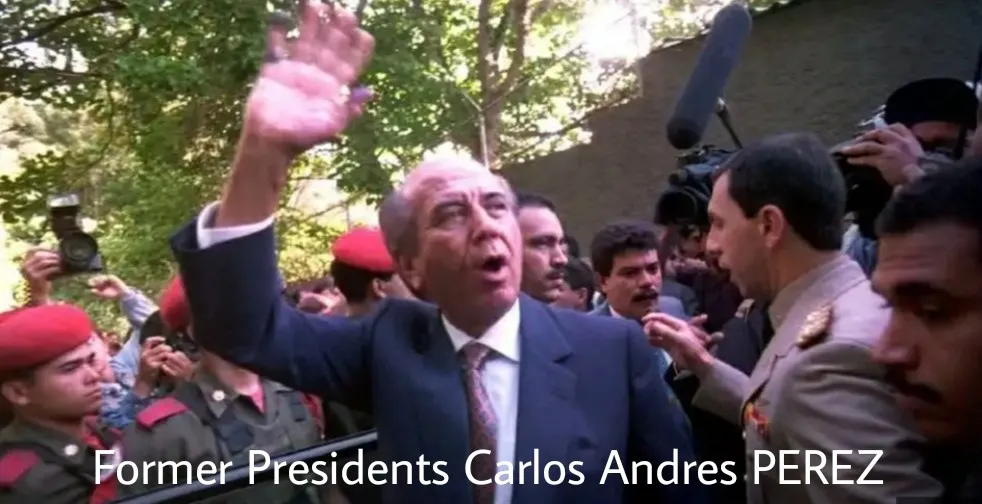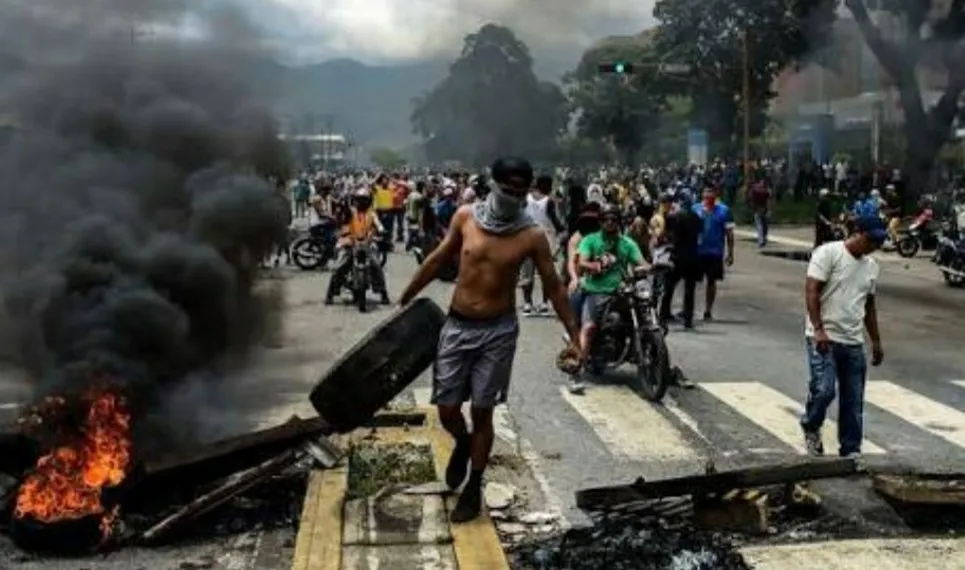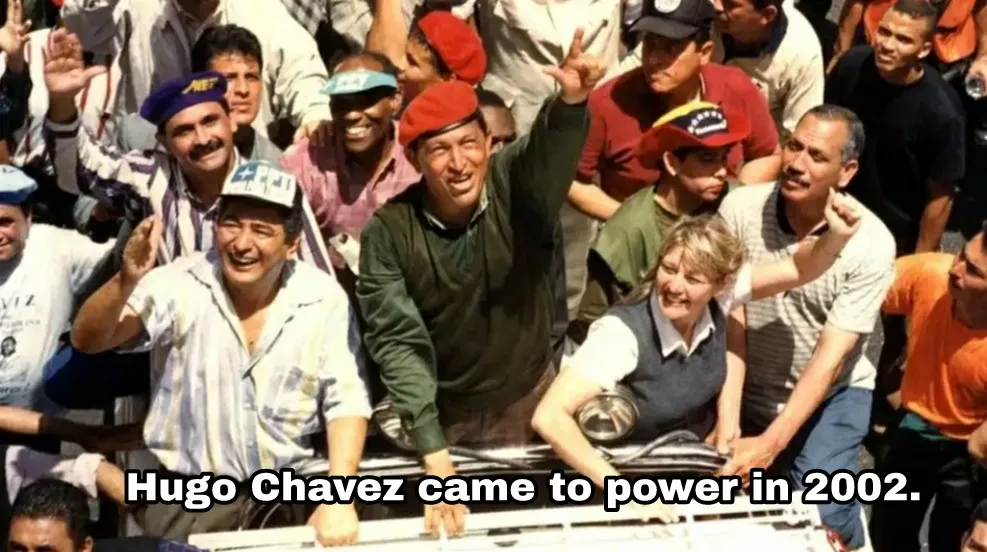
Why is the Venezuelan economy collapsing?
The Organization of Petroleum Exporters Countries (OPEC) was established in 1960 by five countries: Iran, Iraq, Kuwait, Saudi Arabia and Venezuela.
When OPEC was established, Venezuela was the leader with 2.8 million barrels of oil production per day in these five.
Kuwait produced 1.7 million barrels a day, Iran 1.1 million barrels, Iraq 1 million barrels, and Saudi Arabia 1.3 million barrels.
•Venezuela is leaving the Organization of American States •Venezuelan opposition: government coups
•US sanctions against Venezuelan leader Maduro
•7 Constituent Assembly in Venezuela Currently,
Kuwait produces 2.7 million a day, Iran 3.8 million, Iraq 4.5 million, and Saudi Arabia 10 million barrels of oil. Venezuela's production has fallen to 2 million a day.
However, Venezuela has the world's largest proven oil reserves with 300 billion barrels (the second is Saudi Arabia with 267 billion barrels).
The loss in production means a huge problem for Venezuela, who, with low oil prices, suffered from Dutch disease, half of their GDP and earning more than 90% of foreign trade revenues from oil.
The size of the problem is now seen in the civil war-like images that lived in these days, in those who can not find food, it is possible to see them in drug-deprived hospitals. The oil sector for Venezuela has always been the "golden laying hen" of the government, except for the first 10 years after the founding of OPEC, when production rose to 3.7 million a day in 1970.
First Nationalization Period
In 1973, Carlos Andres Perez government, which ran after the Arab oil embargo that jumped oil prices, boldly boosted public spending by three times in 2 years.
For this reason, the current account balance, which gave the country an 8 billion dollar surplus in 1974, gave a deficit of 6 billion dollars in 1978.

Perez, as a solution, Petróleos de Venezuela, S.A. - By establishing the PDVSA, he tried to make the energy sector national.
However, the use of PDVSA's caseless public expenditure and the lowering of petroleum demand in the wake of the Iranian revolution in 1979 put Venezuela in a financial crisis from 1982 to 1989.

Outward opening period PDVSA, seeing that nationalization does not work well, this time tried to find partners in international markets by opening out policy and bought raffiaers in Europe and America.
As a result of these steps, Venezuela succeeded in raising its oil production back to 2 million barrels per day in 1989. In 1989, Perez won elections for the second time, setting up a technocratic government to not make the same mistake this time, and announced a package called "Great Transformation", which put the IMF support and fiscal discipline at the forefront.
Although the program was a success, corruption that could not be overcome, the burden of austerity policies, coupled with falling oil prices, resulted in massive protest waves called "Caracazo".

The political upheaval continued in 1992 with two coup attempts (one by Hugo Chávez), while Perez was dismissed for corruption in 1993, and the economic crises followed.
Rafael Caldera, who took over the government in 1994, once again encouraged foreign investment in the petroleum industry, and with the maximum oil production and export strategy, Venezuela's oil production rose again to over 3 million barrels per day for the first time since 1974, approaching 3.5 million per day in 1998.
The intention of Caldera was to make PDVSA a company that competes in the international arena. But once again, the falling oil prices caused by the economic crises of 1998-2000 have caused many problems.
Caldera was defeated in Hugo Chavez in the end of 1998.
Chavez d importance When Hugo Chavez took over the government in early 1999, Venezuela's oil production was 3.5 million barrels a day, and 2.7 million barrels when it died in 2013. This number has fallen to 2 million per day under the control of the successor Maduro.
The Chávez period of about 14 years can be taught as a lesson on how the short-term calculations of politicians drag the countries in the long run under the heading "How to manage a rich oil country".
Chavez, who first handed over to the oil sector in 2001, is also looking for all reserves in Venezuela, oil production, the ruler of the affairs.
This is particularly difficult for Venezuela to explore and extract, and BP, Chevron, CNPC, Conoco, Exxon, Lukoil, Petronas, Repsol, Statoil and Total, which operate at heavy oil reserves in Orinoco Belt, were the first step to overturn the accounts of investments by large international companies. .
In December 2002, the PDVSA administration went public, seeing that Chávez's policies would adversely affect the country's oil production.

While the country's oil production was 3.3 million barrels / day in November 2002, it dropped by only 700,000 per day in January 2003.
Despite the collapse of the economy, Chavez resisted this protest and occasionally a coup attempt, in return fired 19,000 PDVSA workers and tied PDVSA, an autonomous structure up to that time, to the Ministry of Energy and Oil, and called the "Fonden" he set up a fund he could use.
Chavez's second impetus to Venezuela's petroleum industry came in 2007 when he transferred majority rights to PDVSA to all state-owned foreign companies' operations to boost state revenues. Strong nationalization steps, loss of experience and loss of knowledge due to inefficiencies have resulted in the loss of Venezuela's investments in the oil industry and the loss of great operational capability.
PDVSA transferred $ 44 billion to the financing of Chávez's populist policy in the last year of Chávez's government, which would increase oil production and generate permanent income, due to the fact that the gasoline litter in Venezuela was only 35 cents with the Turkish Lira thanks to government subsidies up to the past year .
Venezuela's largest oil customer is still the US
The petroleum industry is a high-cost industry. It is not necessary to increase production, but to invest only billions of dollars to keep it constant. High oil prices are a factor in facilitating investments. The fact that Venezuela has not increased its oil production even when it is watching oil prices above $ 100 is a sign that the industry is very bad.
The interesting thing is that we made a better country with the words "imperialist western" and "revolution". On the contrary Venezuela was forced to give Chinese and Russian firms to worse conditions due to the vacancy created by Western oil companies in order not to go bankrupt.
China has given more than $ 50 billion in loans to Venezuela since 2007, which "paid" to China as oil nearly half as much as it has now. China's largest oil company, CNPC, is one of the biggest actors in Venezuela.

Russia sold $ 11 billion of weapons to Venezuela during Chavez's rule. PDVSA gave a joint venture to the Russian oil giant Rosneft and mortgaged Venezuela's US refinery company CITGO.
There is also a geopolitical irony: Russia, which has been sanctioned by the US, could theoretically have 4% of the US refinery capacity if Venezuela can not pay the debts. During all this political adventure, the United States continued to make Venezuela one-tenth of US crude oil imports, making Venezuela's largest oil customer, in a sense, the largest source of income. The US is still importing 720,000 barrels of oil a day from Venezuela and exporting 110,000 barrels a day to Venezuela.
Chávez's populist policies have made it impossible for the Venezuelan economy's main source of oil production to recover in the next few years, either in good faith or without knowledge.
The political path of Halefi Maduro goes in the same direction. It is difficult to get out of the economic crisis in Venezuela when the economy is almost completely predicted that oil prices will not recover in a medium-term, oil-exporting country.